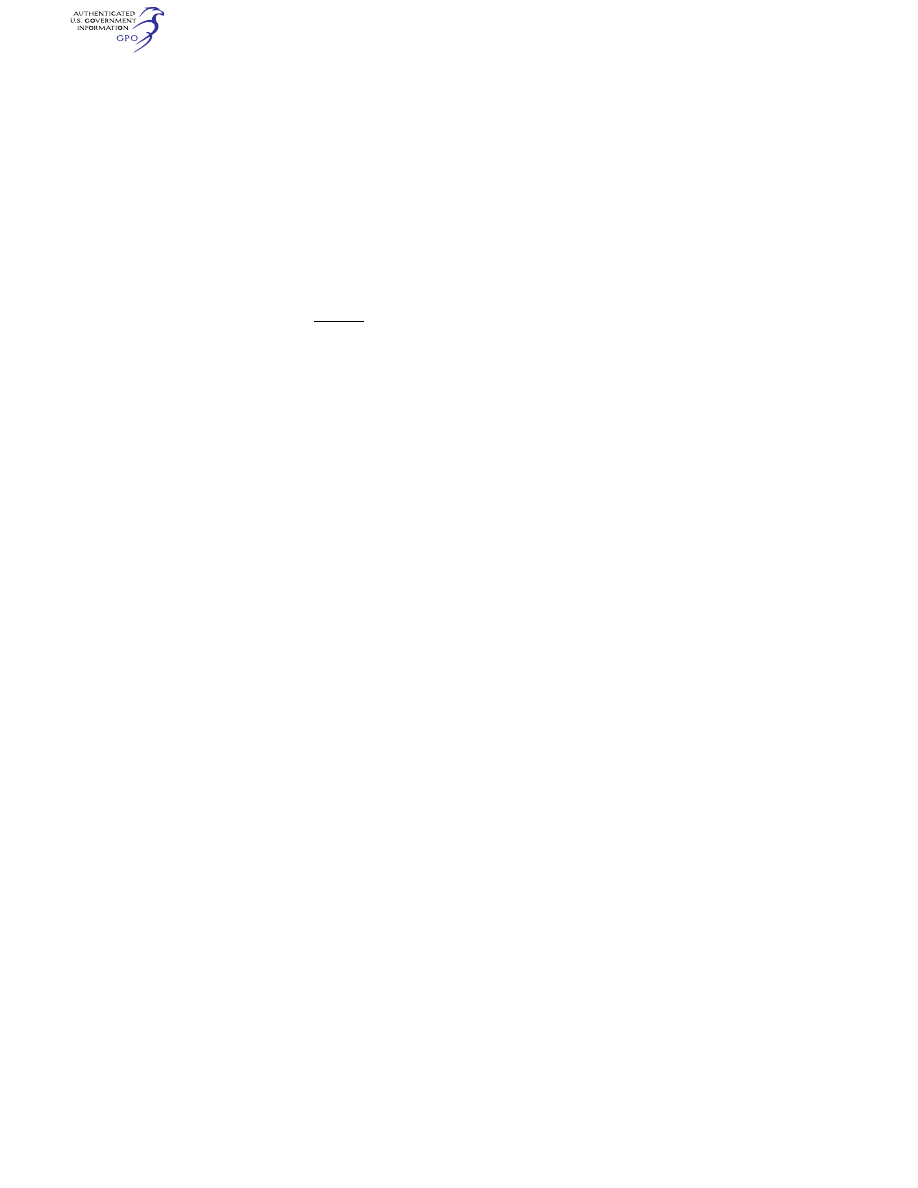
500
14 CFR Ch. I (1–1–24 Edition)
§ 27.341
the rotational tip speed of the rotor
blades, and is expressed as follows:
μ =
V cos a
R
Ω
where—
V = The airspeed along flight path (f.p.s.);
a = The angle between the projection, in the
plane of symmetry, of the axis of no
feathering and a line perpendicular to
the flight path (radians, positive when
axis is pointing aft);
omega = The angular velocity of rotor (radi-
ans per second); and
R = The rotor radius (ft).
[Doc. No. 5074, 29 FR 15695, Nov. 24, 1964, as
amended by Amdt. 27–11, 41 FR 55469, Dec. 20,
1976]
§ 27.341
Gust loads.
The rotorcraft must be designed to
withstand, at each critical airspeed in-
cluding hovering, the loads resulting
from a vertical gust of 30 feet per sec-
ond.
§ 27.351
Yawing conditions.
(a) Each rotorcraft must be designed
for the loads resulting from the maneu-
vers specified in paragraphs (b) and (c)
of this section with—
(1) Unbalanced aerodynamic mo-
ments about the center of gravity
which the aircraft reacts to in a ration-
al or conservative manner considering
the principal masses furnishing the re-
acting inertia forces; and
(2) Maximum main rotor speed.
(b) To produce the load required in
paragraph (a) of this section, in unac-
celerated flight with zero yaw, at for-
ward speeds from zero up to 0.6 V
NE
—
(1) Displace the cockpit directional
control suddenly to the maximum de-
flection limited by the control stops or
by the maximum pilot force specified
in § 27.397(a);
(2) Attain a resulting sideslip angle
or 90
°
, whichever is less; and
(3) Return the directional control
suddenly to neutral.
(c) To produce the load required in
paragraph (a) of this section, in unac-
celerated flight with zero yaw, at for-
ward speeds from 0.6 V
NE
up to V
NE
or
V
H
, whichever is less—
(1) Displace the cockpit directional
control suddenly to the maximum de-
flection limited by the control stops or
by the maximum pilot force specified
in § 27.397(a);
(2) Attain a resulting sideslip angle
or 15
°
, whichever is less, at the lesser
speed of V
NE
or V
H
;
(3) Vary the sideslip angles of para-
graphs (b)(2) and (c)(2) of this section
directly with speed; and
(4) Return the directional control
suddenly to neutral.
[Amdt. 27–26, 55 FR 7999, Mar. 6, 1990, as
amended by Amdt. 27–34, 62 FR 46173, Aug. 29,
1997]
§ 27.361
Engine torque.
(a) For turbine engines, the limit
torque may not be less than the high-
est of—
(1) The mean torque for maximum
continuous power multiplied by 1.25;
(2) The torque required by § 27.923;
(3) The torque required by § 27.927; or
(4) The torque imposed by sudden en-
gine stoppage due to malfunction or
structural failure (such as compressor
jamming).
(b) For reciprocating engines, the
limit torque may not be less than the
mean torque for maximum continuous
power multiplied by—
(1) 1.33, for engines with five or more
cylinders; and
(2) Two, three, and four, for engines
with four, three, and two cylinders, re-
spectively.
[Amdt. 27–23, 53 FR 34210, Sept. 2, 1988]
C
ONTROL
S
URFACE AND
S
YSTEM
L
OADS
§ 27.391
General.
Each auxiliary rotor, each fixed or
movable stabilizing or control surface,
and each system operating any flight
control must meet the requirements of
§§ 27.395, 27.397, 27.399, 27.411, and 27.427.
[Amdt. 27–26, 55 FR 7999, Mar. 6, 1990, as
amended by Amdt. 27–34, 62 FR 46173, Aug. 29,
1997]
§ 27.395
Control system.
(a) The part of each control system
from the pilot’s controls to the control
stops must be designed to withstand
pilot forces of not less than—
(1) The forces specified in § 27.397; or
(2) If the system prevents the pilot
from applying the limit pilot forces to
the system, the maximum forces that
VerDate Sep<11>2014
09:06 Jun 28, 2024
Jkt 262046
PO 00000
Frm 00510
Fmt 8010
Sfmt 8010
Y:\SGML\262046.XXX
262046
EC28SE91.083</MATH>
jspears on DSK121TN23PROD with CFR